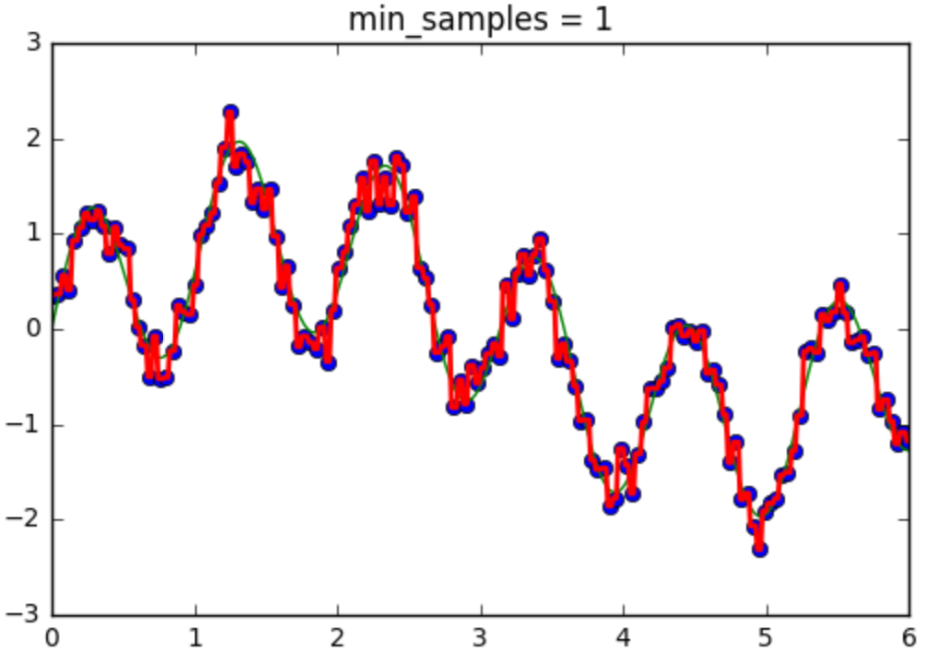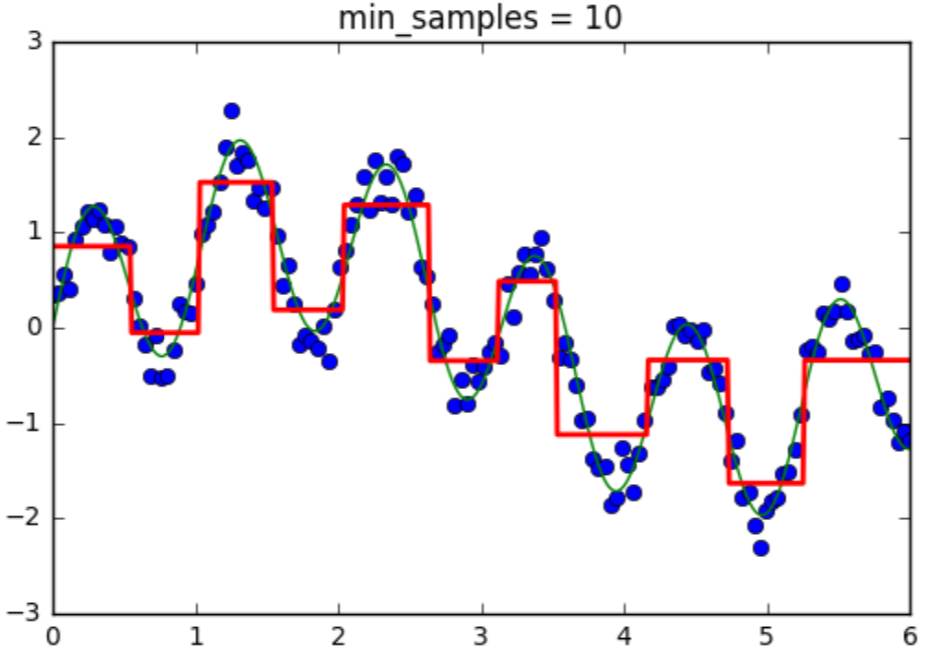Classification And Regression Tree (CART)
Tree-based Methods
CART: Classification And Regression Tree
Grow a binary tree
- At each node, “split” the data into two “daughter” nodes.
- Splits are chosen using a splitting criterion.
- Bottom nodes are “terminal” nodes.
| Type of tree | Predicted value at a node | Split criterion | |
|---|---|---|---|
| Regression | Regression tree | The predicted value at a node is the average response variable for all observations in the node | Minimum residual sum of squares (Split such that variance in subtress is minimized) |
| Classification | Decision tree | The predicted class is the most common class in the node (majority vote). | Minimum entropy in subtrees (Split such that class-labels in sub-trees are “pure”) |
When stop?
Stop if:
- Minimum number of samples per node
- Maximum depth
… has been reached
(Both criterias again influence the complexity of the tree)
Controlling the tree complexity
| Number of samples per leaf | Affect | |
|---|---|---|
| Small | Tree is very sensitive to noise |   |
| Large | Tree is not expressive enough |  |
Advantages 👍
Applicable to both regression and classification problems.
Handle categorical predictors naturally.
Computationally simple and quick to fit, even for large problems.
No formal distributional assumptions (non-parametric).
Can handle highly non-linear interactions and classification boundaries.
Automatic variable selection.
Very easy to interpret if the tree is small.
Disadvantages 👎
Accuracy
current methods, such as support vector machines and ensemble classifiers often have 30% lower error rates than CART.
Instability
if we change the data a little, the tree picture can change a lot. So the interpretation is not as straightforward as it appears.